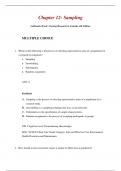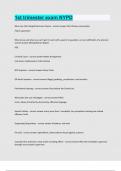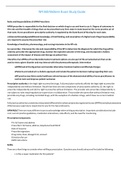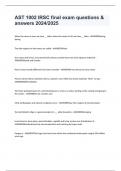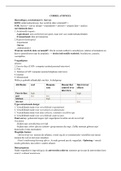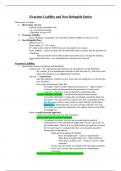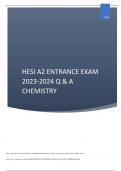Exam (elaborations)
Chapter 12: Sampling
- Course
- Institution
LoBiondo-Wood: Nursing Research in Canada, 4th Edition MULTIPLE CHOICE 1. Which of the following is the process of selecting representative units of a population for a research investigation? a. Sampling b. Snowballing c. Delimitation d. Random assignment ANS: A Feedback A....
[Show more]
